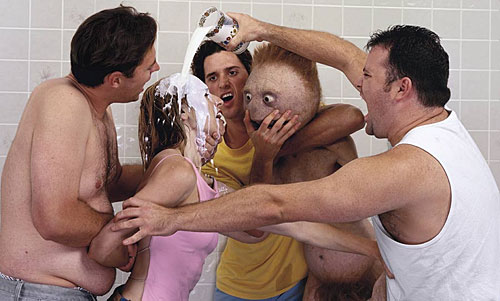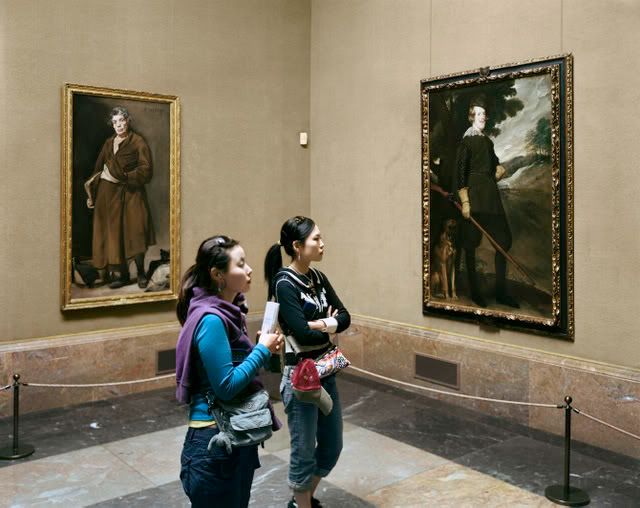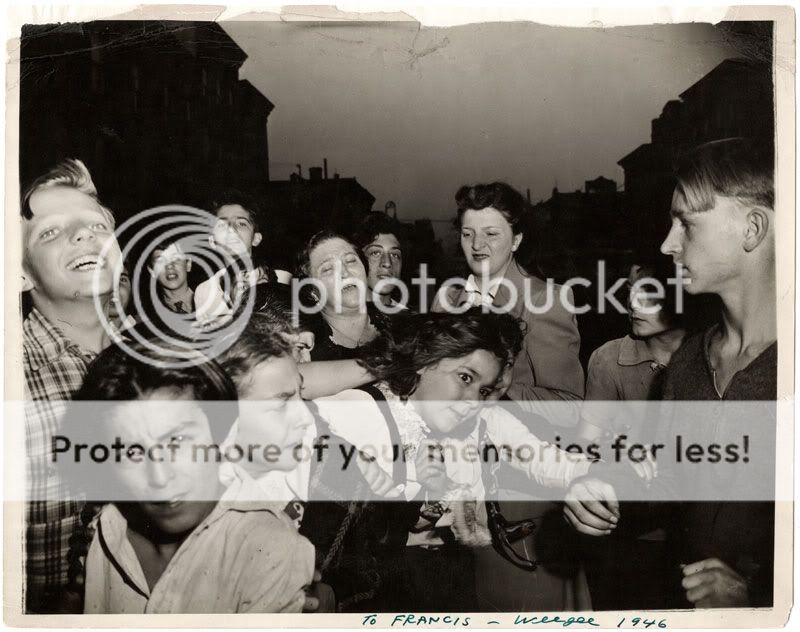Lately I've done a little reading on art theory and art criticism as it relates to modern photography. Perhaps the best book I've read so far is Charlotte Cotton's
The Photograph as Contemporary Art. I've been fascinated to find that most contemporary art photography is, as
one recent blogger summarized it, "theoretically-driven conceptual photography." I'm speaking here of that contemporary photography favored by galleries, museums and academics. In other words, the artworld. In fact, to distinguish it from other forms of non-commercial or artistic photography, I'm going to label it simply artworld photography.
 As artworld photography goes, this is straightforward. No, really.
As artworld photography goes, this is straightforward. No, really.
Artworld photography is a genre of photography most people never see, even in photography magazines, and when they do get dragged into a gallery to look at it, they have no idea why it's on display. Great swaths of it are driven by postmodern theory, which challenges traditional ideas of authorship and meaning a variety of ways. The net product is photography that, counterintuitively, "relies most heavily on words, whether to explain or obfuscate its meaning." It's photo-illustration, or visual performance, illustrating various artistically fashionable political or theoretical ideas. It is a theoretical exercise rather than the aesthetic or documentary exercise most people assume photographs to be.
 Part of a gallery series by Thomas Struth. This is more challenging artworld fare, but typical. It is not visually interesting in any obvious way and its meaning is esoteric. Artworld art.
Part of a gallery series by Thomas Struth. This is more challenging artworld fare, but typical. It is not visually interesting in any obvious way and its meaning is esoteric. Artworld art.
For these reasons, it seems few artworld photographers succeed as artworld photographers on the visual strength of their photographs alone. They invariably offer up explanatory narratives for their work that are heavy in theory and couched in the lingo of artworld in order to impart artistic meaning to their work. Or more precisely, using
Arthur Danto's terms, to legitimate their work as a candidate for artistic appreciation. In fact, I expect it would be very difficult to break into the artworld with your photographs if you could not explain their value in artworld terms. Or at the very least, you must attract critics and curators (like
Szarkowski) who do that for you.
Realworld photography is basically everything else. It's primarily committed to what artworlders would call a "straight" aesthetic, but it's realworld because it is democratic. You don't have to belong to a guild just to have an opinion on a photograph, as in artworld. There, first you need a certain status or credentials; then you must demonstrate an informed understanding of the photograph; then you have the right to an opinion. In realworld, you just like the damn picture or not. Democratic.
 "Funeral - St. Helena, South Carolina " (1955), from Robert Frank's book, The Americans. Realworld art.
"Funeral - St. Helena, South Carolina " (1955), from Robert Frank's book, The Americans. Realworld art.
Sure, it goes deeper than that. In realworld we have our guilds or, better, clubs. You can become a connoisseur or a collector or blogger or a film fetishist and, very often, you are a photographer yourself. There is a history of the art you learn and become a part of yourself. There are of course cultural, political and historical frameworks for critical judgments. It can be as challenging as anything in artworld. But in realworld a great photograph can just be a great photograph, without having to be overtly transgressive, political, or encoded with a theoretical narrative.
Most photographers are, in fact, realworld photographers. They revere the masters of the "straight" aesthetic that became dominant about a century ago and they still work in strong dialogue with that aesthetic. They take seriously the unique qualities and genius of the medium. They regard photography as an artistic end, not as an artistic means. I'm definitely a realword partisan.
Now, I do confess, I enjoy at least some artworld photography. My biggest objection to much of it is that it is esoteric and pretentiously didactic. I find myself working hard to extract meanings that do not interest me. But I find more compelling that generous portion of photography that straddles the lines. I enjoy the democratic work of someone like
Platon, whose portraits are definitely realworld, even fashion, but still is tapped for gallery shows. I guess he gets it all.
![Forgotten Shoes [Payson 3/52]](http://farm5.static.flickr.com/4082/4934469965_c3a7b03504.jpg)

![Mosaic [Payson 2/52]](http://farm5.static.flickr.com/4096/4912735079_fd111ddd52.jpg)




![Cold Storage [Payson 1/52]](http://farm5.static.flickr.com/4073/4892873144_498526f7a9.jpg)

